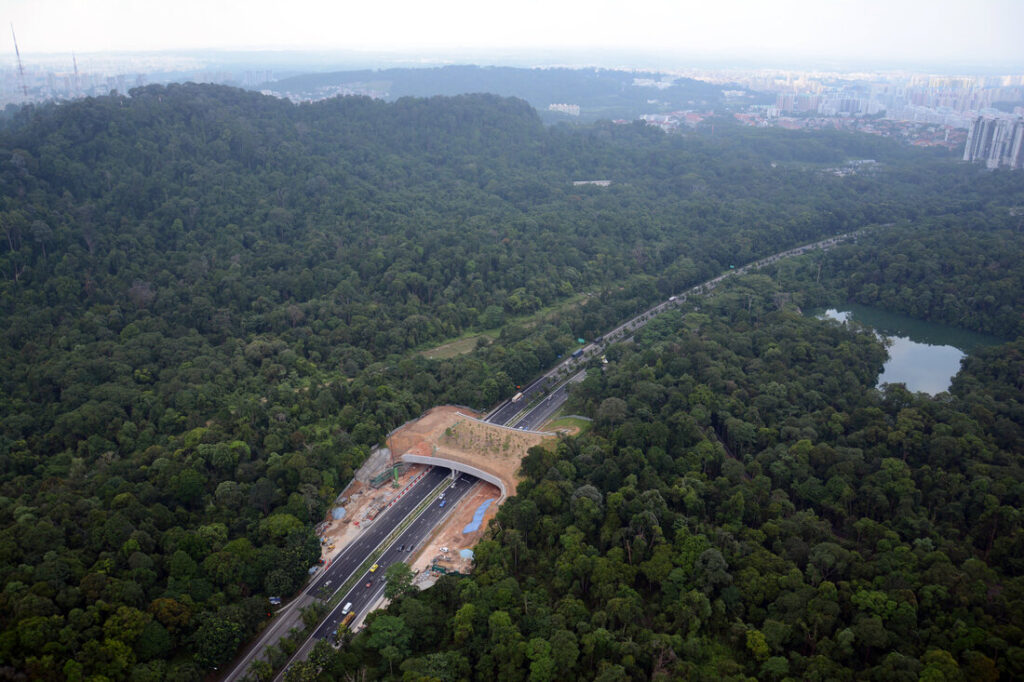Ever since I started posting and promoting on Facebook conservation corridors (also referred to as wildlife corridors, eco corridors, migration corridors, and the like), I started getting sarcastic commentary. “Har-har, how’s the deer gonna know where to cross, deer don’t read signs, har-har!?”
Then there were the ones who took it as an affront, a simple photo from Wikipedia—a brilliant illustration of what a conservation corridor could and should look like—presumably with private lands nudging up against land that is reserved as a “corridor” for animals to continue on their way without interruption and fragmentation of natural habitat. It caused quite a stir and some nasty back and forth between community members. My favorite comment by far, however, was the one about “hippie commie climate change b.s.” so I just had to run with that one.

Wildlife overpasses are used as a mitigation measure worldwide to reduce the mortality of wildlife on roads, and to a certain extent, to facilitate the genetic exchange of both flora and fauna species in forest fragments. This photo depicts a newly constructed wildlife overpass in highly urbanized Singapore, which connects two rainforest nature reserves that was separated by an eight-lane highway for close to 30 years.
Benjamin P. Y-H. Lee (University of Kent). [CC BY 4.0 ]
Hippies, commies, game commissioners, gunslingers
So yes, there may be some leftist hippie commies in our midst, right alongside some good ol’ gun-totin, NRA members who love to hunt and have a deep and abiding appreciation for wildlife conservation, which means ensuring that animals are healthy, thriving, abundant, and free to move about, feed and reproduce in their most natural state of the environment.
And for the record, conservation corridors have quite a few fans I would hardly consider of the leftist, hippie commie ilk. We’re talking about Departments of Transportation, Departments of Natural Resources, and Game Commissions from Montana to Florida and quite a few in between—who have been studying wildlife-vehicle interaction for decades and understand the value of coming at this very costly issue from “under” and “above” rather than dead on the road.
That doesn’t mean we all agree on this stuff. There are challenges. But we’re highly intelligent and cooperative human beings who know how to work things out. We’re Americans, after all, so we do things democratically. Not everybody’s happy with everything all the time, but in general, things get better for the greater good of all.
Have something to fuss about? Go ahead. Get it off your chest. But by all means, do your due diligence and keep learning about conservation corridors and the difference they can make. The difference might end up being in your own backyard.
